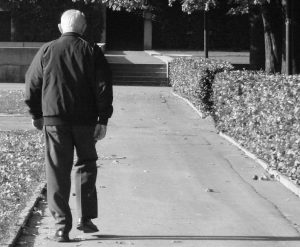3.2.4 Observing Changes in Physical Movement
During the assessment, you may notice previously known physical movement challenges that the clients face, as well as observing new changes in the client’s physical movement.
For example, gait is the manner or style of walking, according to the Medical Dictionary. You should observe a client’s gait whenever they are ambulatory.

Learning what specific movement disorders’ signs and symptoms involve as well as their clinical name will assist you in recognizing these symptoms when you see them in your clients, and help you to pass information along appropriately.
General information on disorders and illnesses that can affect movement is listed below.
- Ataxia is a condition that causes a number of symptoms, including uncoordinated movement of limbs, loss of balance and speech issues. Ataxia is caused by damage to the cerebellum.
- Cervical Dystonia presents with spasm of the neck, causing it to twist in different ways. The cause is mostly unknown, but it has followed injuries in some cases.
- Dystonia is a condition that presents with spasms in the muscles of the body, including the jaw and vocal cords, ranging from a local to general spasm in various and potentially multiple areas of the body. These symptoms may be seen in several diseases such as Parkinson’s, Huntington’s, strokes, and injuries.
- Chorea also known as Huntington’s, has symptoms that include irregular involuntary movements, gait and balance issues, and issues with swallowing. This is a hereditary diagnosis.
- Parkinson’s disease is a neurodegenerative disease, causing tremors, stiffness and slow movements. It is caused by certain nerve cells in the brain breaking down. Parkinsonism.This disorder describes a group of conditions that has symptoms similar to those of Parkinson’s disease.
- Restless legs syndrome, also known as Willis-Ekbom disease, is a movement disorder that causes unpleasant, crawling, aching, or abnormal feelings in the legs while relaxing or lying down. These sensations are often relieved by movement. The cause is unknown.
- Tremor. This movement disorder causes involuntary rhythmic shaking of parts of the body, such as in the hands, head or other parts of the body when trying to use them; the head can also have a “yes” or a “no” motion. The most common type is essential tremor. Risk factors are genetic mutations.
Media Attributions
- Man walking © Kekka adapted by Amanda Robinson is licensed under a CC BY-NC (Attribution NonCommercial) license

